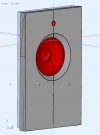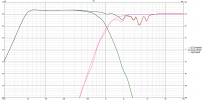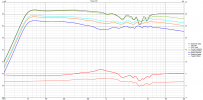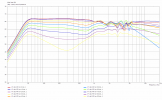NRD Also confirms GR Research Danny claims that open baffle is the way to go.
But you have to make a clear distinction between Clayton Shaw's classic OB concept for the woofers, and Danny's flawed V-frame concept used with NX-Otica and NX-Treme.
With a well-designed classic OB concept, you get the desired dipole radiation. The frequency responses at different angles run parallel to the on-axis FR for small angles and have the maximum extinction at 90°.
A woofer (here 10'', no XO) in a flat baffle like the CALADAN speaker will show horizontal measurements like:
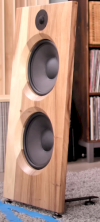
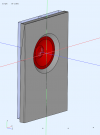
FR hor deg0°-90°

FR hor deg0°-90° normalized, normalized full sonogram (till 3kHz), polar diagram 100Hz and 400Hz (shows the dipole behavior)
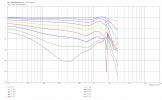
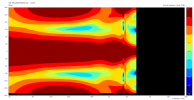


So the woofer shows nearly textbook dipole behavior. There will be some vertical inter-driver interference of the two 12'' woofer and problems in vertical radiation around the XO frequency because of the large distance of both woofer to the tweeter.
In the CALADAN speaker the XO frequency is 1kHz. The tweeter is not an open baffle driver, but a normal tweeter. This makes the radiation above the crossover frequency somewhat uneven because the tweeter has a wider radiation in the 1-5kHz range as the woofers up to 1kHz.
Above 1kHz the CALADAN speaker is a normal boxed speaker with a wide baffle (which makes the radiation of the tweeter somewhat narrower, which is positive for the transition to the woofer).
In contrast, Danny's V-frame concept used for NX-Otica and NX-Treme has problems with resonances caused by the V-frame baffle.
If woofers are put into a V-frame baffle, the "wings act as a resonator chamber". In the area around the resonance, the speaker then no longer radiates as a dipole, but extremely unevenly and worse than any normal speaker.
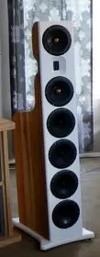
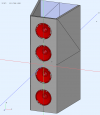
FR hor deg0°-90° normalized, normalized full sonogram
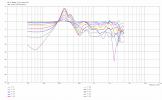

If you compare this radiation with that of the classic OB speaker above, it becomes clear that basically the woofers in the V-frame baffle only have optimum dipole radiation up to about 100Hz, then the resonance becomes noticeable.
If the midrange drivers also have a V-frame baffle, the problem is repeated and if the depth of the wings is different, the resonant frequency also changes.
This is also shown by Danny's own measurements (the more the angle increases, the higher the SPL of the resonances at 270Hz, 570Hz and 1200Hz become):
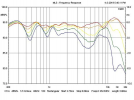
More
details can be found here.
So if "open baffle is the way to go", then NX-Otica and NX-Treme are out of the question for this, as there is no dipole radiation that one would expect with an OB concept.
With the CALADAN speaker you should get the expected dipole radiation up to the crossover frequency at 1kHz and above that the speaker behaves like any other normal speaker with width baffle.













